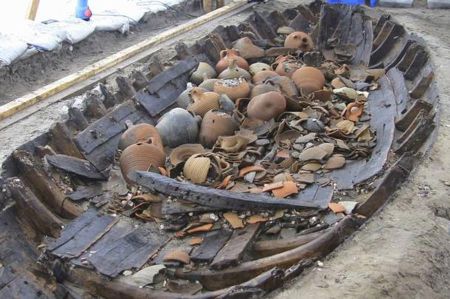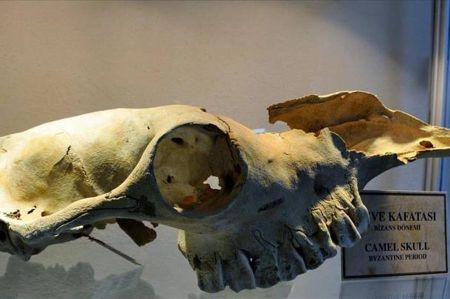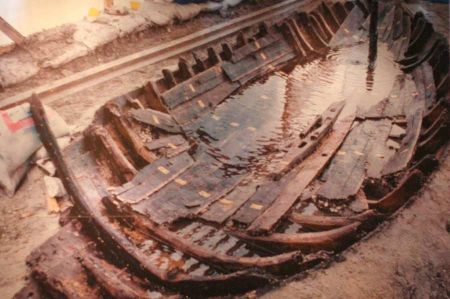Finds from construction pits of Marmaray project in Istanbul
- Written by Portal Editor
As part of the conference “İstanbul as an archaeological site” of the Mimar Sinan University of Fine Arts and the Anatolian Culture and Art Research Centre (AKSAM), finds from the excavation pits of the Mamaray project, the tunnel construction project of the subway Route below the Sea of Marmara, were presented.
Archaeological excavations as part of the Marmaray project have covered an area of more than 60,000 square meters in recent years. In some places they went to a depth of up to nine meters below sea level in the Sea of Marmara. In the course of the excavations, the ancient port of Emperor Theodosius from Roman times in the fourth century was discovered. The existence of this once important port was already known from records and ancient drawings, but the exact location was not known. This was then brought to light by initial excavation work on the construction pit, just a few hundred meters from the shore of the Sea of Marmara.
First, the ancient port of Emperor Theodosius

Many of the ships seem to have been abandoned from one moment to the next, sunk to the bottom of the harbour or thrown onto the shore as if by a giant hand. Others still had their heavy statues, building materials, blocks for temple complexes or magnificent buildings on board. The cause of this has not yet been clarified, possibly a tsunami triggered by an earthquake.

"Of course, time and money for archaeological finds were taken into account when planning the project, but the extent and wealth of the finds surprised us all," said Günter Haass from the German Society for Technical Cooperation (GTZ), who worked as a consultant for The Turkish Ministry of Transport had been sent. "It's great for Istanbul that we accidentally came across the long-buried Theodosian port, but for the Marmaray Tunnel project this means an enormous delay." Although this does not call into question the financing - the The Bank of Japan and the European Investment Bank are making the funds available despite the time delay - but the loans are becoming more expensive and the time at which the income will flow is now shifting considerably.
The slow silting up of the harbor basin
A few years ago, the results of the excavations could be admired in a special exhibition in the Archaeological Museum.
Ship hulls from the 9th and 11th centuries, recovered in clay and sensationally well preserved, were excavated and preserved using every trick in the book. Countless other artifacts were on display in the exhibition “Under Daylight: 8,000 Years of Istanbul” and will be permanently presented to the public in a few years in a new museum in the immediate vicinity of the future Yenikapi interchange station.
Turkish President Abdullah Gül showed more understanding for the work during a visit to the research facility. He noted in the guest book: "It is clear that the archaeological finds discovered on this site shed light on İstanbul's glorious past as well as the different eras in humanity's historical adventure."
The most exciting finds, however, are the 1,500 footprints and wooden graves
Archaeologists previously assumed that the history of Istanbul began around 2,700 years ago. Now it looks as if science has to rethink. The most exciting finds, however, are the 1,500 footprints and wooden graves with human skeletons that date back to around 6,000 to 6,500 BC. Be estimated. They refute the previous theory that the first human settlements in Istanbul were built 2,700 years ago.
The sizes of the footprints range from today's European shoe sizes 35 to 42. Anthropologists believe that the footprints come from those skeletons that were found at the same location. The excavations also uncovered two well-preserved graves, which probably date from the same time.
Please read as well:
